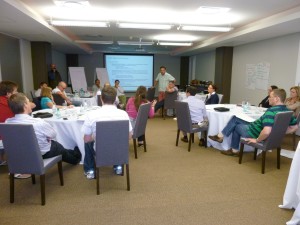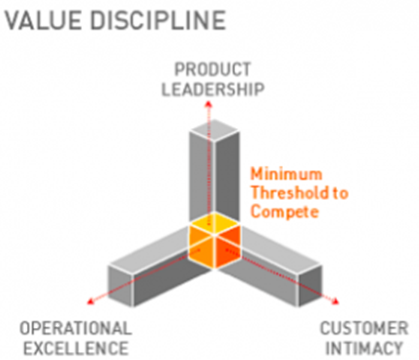5 ways to ensure payback on executive education investment
In the last few months I have been speaking to a lot of corporates as I set up my new business, Corporate Faculty
I have been mulling over a recurring theme; I keep hearing about corporates that have run very expensive and thorough executive education programmes, but don’t feel they have seen significant change in the leadership team or, more to the point, in business performance.
I’ve been analysing the conversations to work out why executive education goes wrong – or at least why does it fail to deliver? These are my thoughts
1. Grounded in context of business
The advantage of bespoke executive education programmes is that you can really tailor the learning to the business and align the programme objectives to the business objectives. This seems obvious but in my experience not common practice.
An off-the-shelf programme inevitably can seem an easy option, but you miss out on the added value of working through key areas of the business – such as ensuring you haven’t got a Tesco strategy and that it is clearly articulated.
I firmly believe any programme must be focused on business goals – which have to come straight from the top. The Board and HR have an important role in shaping a programme, but we also interview senior management first and get the key stakeholders on board as we begin to design the programme. A steering group of senior people is a good way to do this and they can help test out that the programme is delivering as it progresses.
It’s also important to involve and integrate the line managers of people attending a programme– and then they can coach and support their managers when they return. You need to ensure they are drivers of change as a result of the programme, not blockers because they weren’t involved or didn’t believe in it.
Too often senior people ‘send their people on a programme’ and don’t have proper conversations about their expectations of them, or think about their role in coaching and supporting them when they apply the learning back in the business.
2. Board alignment
If a group from across a business goes on an executive education programme, they inevitably bond and form a common language and thinking between themselves – this article by Adam Giles and Tim Hammergren explains the power of a common business language. However, this can become excluding to others in the organisation.
Some directors may feel threatened or inadequate. I worked with one organisation that had recently recruited a new strategy director. When we were explaining the programme to him, as part of the process to involve senior management, he confessed ‘I might need some coaching – I don’t know those models myself’.
We often build in mini-versions of the programme for the board so they are familiar with techniques and thinking. This ensures a common language for those on the programme but also at the top.
3. Link to the strategy
I said in an earlier blog that it is rare to find a corporate where the strategy is both clearly focused and articulated. A large part of any executive education programme should be around understanding the strategy and then translating it into operational plans and activities.
If the strategy isn’t challenged and understood at the start of the programme, then the executive education will be less effective. And this is why it is so important to have the support of the board and leadership team to ensure the programme really delivers the strategy. The business and its activities must be aligned to the strategy.
There is also the issue of how the strategy works across the business. One division may not need the same strategy, so how much should the business apply one overall strategy and what is the board’s role in putting their foot down for everyone to follow it?
An executive education programme can’t give all the answers but it should equip leaders to have the conversations they need, with the toolkits and theories, so they can have really robust discussions about the strategy.
4. Less is more – do a few things well
One business has asked us to work with them. The brief we’ve been given is a smorgasbord of topics from strategy, 360 feedback, leadership, change management, leading high performing teams etc etc.
I firmly believe that to bring about change you have to focus and do a few things really well, rather than too much. In this case, what I have recommended is a programme clearly linked to the business strategy with all the sessions aligned to a few key areas which will make a difference to the business.
The client is really interested in the approach and can see the sense. It’s up to us as the executive education experts to advise the client and shape a programme that works.
5. Test understanding in classroom scenario
Over the years I have seen a number of different styles for delivering executive education – and there are different strengths in every style.
The main differences range from the very academic, which focuses on understanding the theories and principles behind leadership and management, to more of what I would call ‘training’, which is focused on changing behaviours.
I’ve always thought the best approach is a mix of the two. The academic theory needs to underpin any programme, but it’s important then to test out the understanding in a classroom setting – not expect people to go back to work and implement it all without having tried it out and practised. It’s important to get participants to embed the knowledge through discussions and role play – and it’s then up to the lecturers to check that the theory and the practice are all working.
I heard a story a while ago about a senior manager with an MBA from a top business school who joined one of the big 4 accountancy firms. After a few weeks he went up to a marketing manager and asked for her advice and help on producing a marketing plan for an area of the firm. The marketing professional – who was rather in awe of the MBAs – was horrified and asked about his MBA and didn’t it cover marketing. He replied yes, but that was all theory. Now he was in a workplace, he was struggling to apply that theory into producing a marketing plan.
And I think this is one of the critical areas where executive education can fall down. The theory all sounds logical when you are learning it in a group, but too often it’s not giving the skills to drive change through an organisation.
What do you think is the key ingredient that ensures an executive education programme really works and improves business performance?









